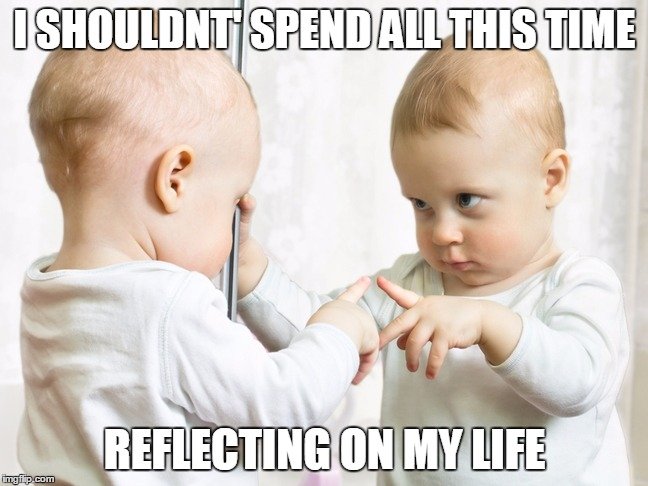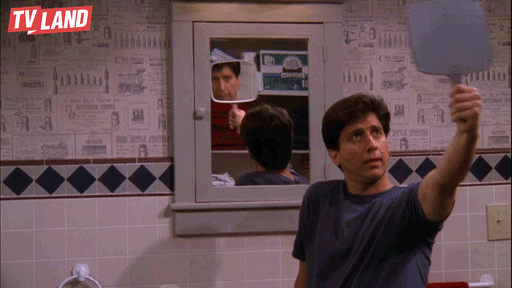Table of Contents (click to expand)
The reason mirrors appear silver is because they are made of a well-polished metal surface. The metal used in mirrors is shiny, which gives the mirrors their silver color.
If you stare into a mirror long enough, trying to see what ‘color’ it is, you’ll probably come up with an answer of silver. Of course, mirrors are intrinsically supposed to reflect an image, so having their own color seems quite counter-intuitive. However, if you look at a mirror from an angle, from the side, or when it’s cracked, it will give your eyes the impression that the entire mirror is silver. Why is that? Well, first of all, let’s find out precisely how mirrors reflect the light we see.

What Are Mirrors, Exactly?
When you look at an object, what you are essentially seeing is the light that is either emitted from the object, or reflected off the object, entering your eye. So, what you’re not seeing is the light being absorbed by an object. If an object is green, like the leaves on a tree, it’s because all the colors on the visible spectrum have been absorbed except green, which has been reflected. If something is white, it means that all the colors of the visible spectrum are reflected and none are absorbed. Now, wait a minute, isn’t that what a mirror is? Just a surface that reflects all colors of the visible spectrum? So perfect mirrors are technically white, right?

It is practically impossible to create a mirror that reflects 100% of its light. Some light will always be absorbed by the mirror itself. About 5% of the light hitting a common bedroom mirror is absorbed, which reduces the intensity of the reflection. A perfect mirror – one that does not absorb any light at all – cannot be realistically created, as some energy is always going to be lost in the process of reflection.
Also Read: How Can Some Objects Be Completely Black And Still Be Highly Reflective?
What Is A Mirror Made Of?
The mirror in your bedroom is probably a uniform flat surface, which means that the glass in it is probably float glass. Float glass is the most common type of glass, found in everything from windowpanes to beer bottles, and it’s made from soda-lime, which often gives it a slightly greenish tint. If you’ve ever stared at two mirrors placed in front of each other, you’ll have seen an “endless reflection”. However, before the endless reflections fade into tiny blackness, you’ll notice a stark green hue, which comes from the glass. Does that mean that mirrors are actually green? Well… not quite.

The mirrors we commonly find around our house aren’t perfect mirrors, but they’re good enough to do the job. Mirrors are made from either aluminum (most common) or silver, along with a coat of glass. Some are even made through mercury silvering – simply applying a coat of mercury. Some of the earliest telescopes in the 19th century actually used ‘liquid mirrors’ made from a continuously rotating reflective liquid, usually mercury or gallium. These are still used today by space observatories, as they’re super cheap to make, as compared to conventional space telescopes. Everything these days, from the door mirrors in your car to the mirror in your bathroom, will typically use aluminum. So basically, a mirror is just a lot of shiny metal with some glass on top and a frame to make it look pretty.

That’s what gives a mirror its silver color. Aside from the glass, a mirror is essentially just a well-polished metal surface. In many ways, it’s just like a well-polished plate or a shiny car. If you’re ever looking at a mirror and are unable to place why it appears silver to your eyes, just remind yourself that the metal used underneath is shiny. Now, determining why metals are shiny? Well, that’s an article for another day!
Also Read: The Science Behind One-Way Mirrors: How Do They Work?
How well do you understand the article above!

